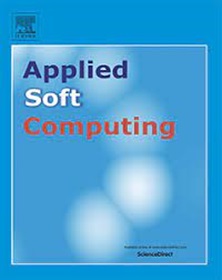Self-supervised Transformer for 3D point clouds completion and morphology evaluation of granular particle
IF 7.2
1区 计算机科学
Q1 COMPUTER SCIENCE, ARTIFICIAL INTELLIGENCE
引用次数: 0
Abstract
Determining the morphology characteristics of particles using 3D point cloud is promising and crucial for the quality inspection of granular materials. However, it remains challenging due to the cumbersome process and incomplete 3D point clouds obtained from laser scanning of particles. In this study, a novel intelligent method, named self-supervised transformer-based encoder and decoder model for granular materials (SSPoinTr-GM), is developed for the automatic completion of partially occluded 3D point clouds and morphology characteristics evaluation. The complete cloud points of 100 cobble and 100 gravel particles are first scanned to establish a benchmark 3D point cloud dataset. To form partial point clouds for training, the complete point cloud is divided into global seed points by the farthest point sampling (FPS) method and the local cloud points around each seed point by the k-nearest neighbor method. Then, the seed points and their local cloud points are randomly removed to generate partial cloud points as input, training the encoder and decoder in a self-supervised way with the original complete point cloud as ground truth. Experiments are conducted to validate the effectiveness of the novel method compared with four existing completion baselines based on the 3D point cloud dataset. The results indicate that the CD1 loss of the completed particles by the proposed method is, on average, 49.05 % lower than that of existing baselines. Additionally, the error rate of the calculated morphology characteristics of the completed particles is, on average, 66.06 % lower than that of the partial point clouds.
三维点云补全及颗粒形态评价的自监督变压器
利用三维点云来确定颗粒的形态特征是很有前途的,对于颗粒材料的质量检测至关重要。然而,由于激光扫描粒子的过程繁琐和获得的三维点云不完整,这仍然是一个挑战。本文提出了一种基于自监督变压器的颗粒材料编码器和解码器模型(sspointrr - gm)的智能方法,用于部分遮挡的三维点云的自动补全和形态特征评估。首先扫描100粒鹅卵石和100粒砾石的完整云点,建立基准三维点云数据集。为了形成用于训练的局部点云,通过最远点采样(FPS)法将完整点云划分为全局种子点,通过k近邻法将每个种子点周围的局部云点划分为局部云点。然后,随机去除种子点及其局部云点,生成部分云点作为输入,以原始完整点云作为地面真值对编码器和解码器进行自监督训练。通过实验验证了该方法的有效性,并与基于三维点云数据集的四种现有完成基线进行了比较。结果表明,采用该方法制备的完整颗粒的CD1损失平均比现有基线降低49.05 %。完整粒子形态特征的计算错误率平均比部分点云低66.06 %。
本文章由计算机程序翻译,如有差异,请以英文原文为准。
求助全文
约1分钟内获得全文
求助全文
来源期刊

Applied Soft Computing
工程技术-计算机:跨学科应用
CiteScore
15.80
自引率
6.90%
发文量
874
审稿时长
10.9 months
期刊介绍:
Applied Soft Computing is an international journal promoting an integrated view of soft computing to solve real life problems.The focus is to publish the highest quality research in application and convergence of the areas of Fuzzy Logic, Neural Networks, Evolutionary Computing, Rough Sets and other similar techniques to address real world complexities.
Applied Soft Computing is a rolling publication: articles are published as soon as the editor-in-chief has accepted them. Therefore, the web site will continuously be updated with new articles and the publication time will be short.
 求助内容:
求助内容: 应助结果提醒方式:
应助结果提醒方式:


